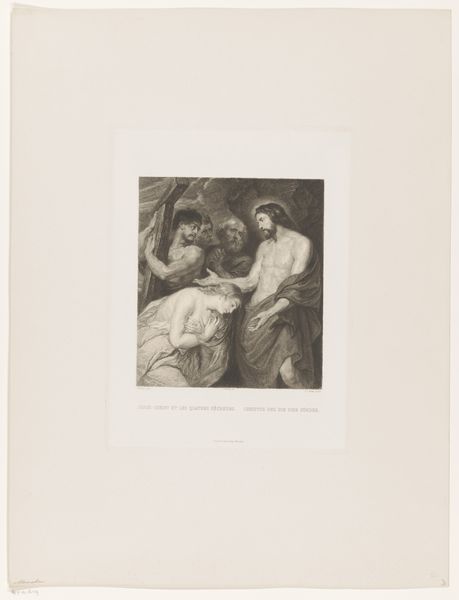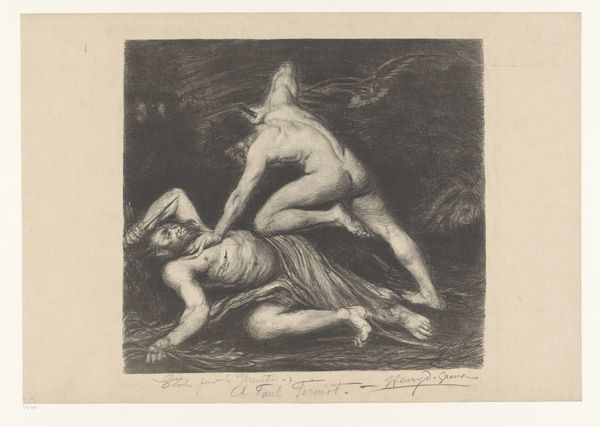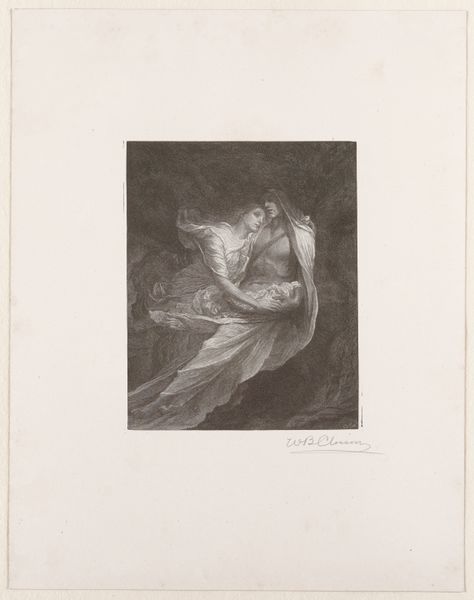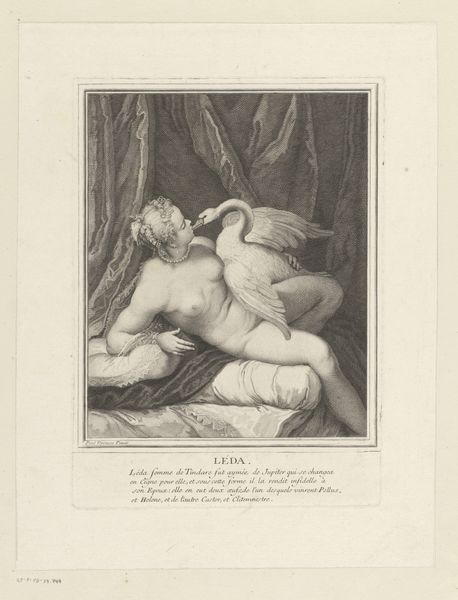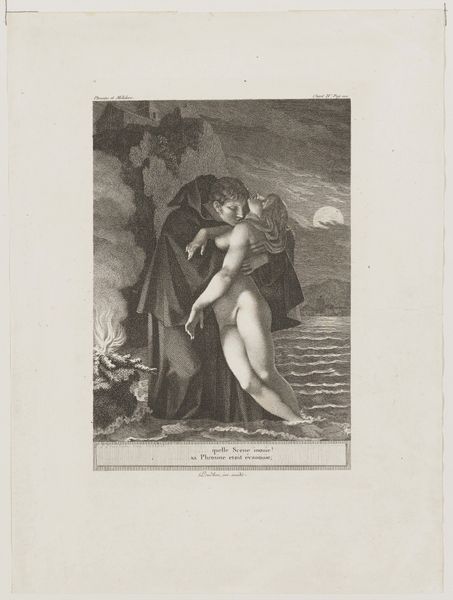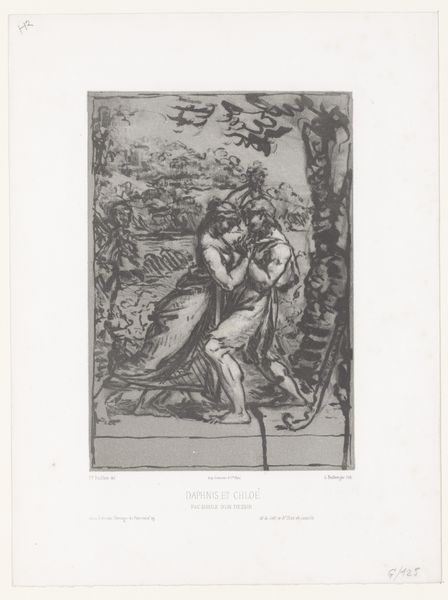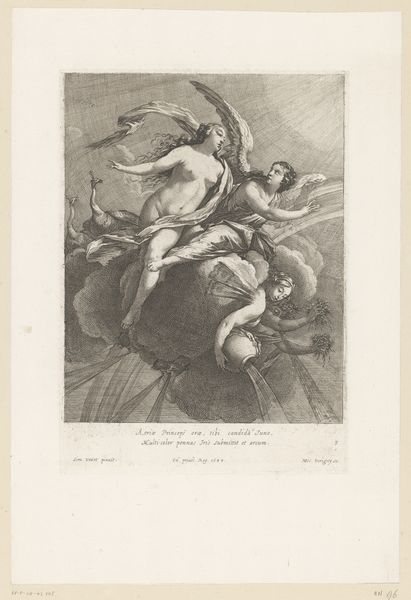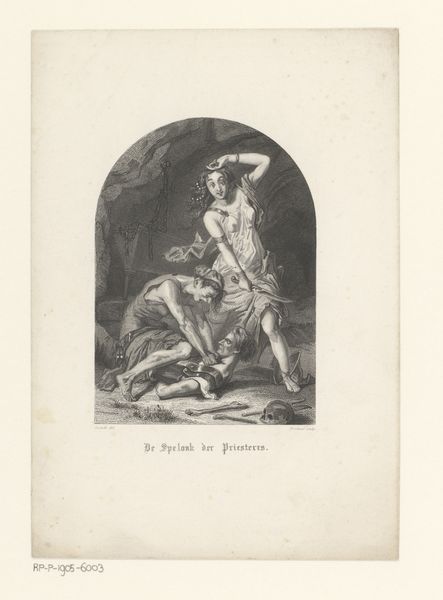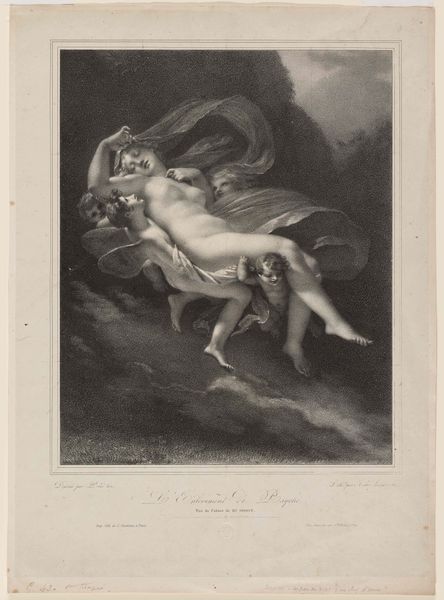
Dimensions: height 270 mm, width 362 mm
Copyright: Rijks Museum: Open Domain
Curator: What a gripping scene! I immediately sense a dramatic clash between intimacy and despair. The figures seem almost suspended in a state of eternal sorrow. Editor: Indeed! Here we have a print titled "Francesca da Rimini en Paolo Malatesta," dating roughly from 1842 to 1863, created by Frederik Hendrik Weissenbruch. The Rijksmuseum is its home. This engraving captures a poignant episode, doesn’t it? The shades, the ink, and the paper all dance together to create this Romantic tragedy. Curator: The Romantic aesthetic truly shines. Look at the bodies; they almost defy gravity! It's a whirlwind of emotion, visually translated. One can almost feel Francesca’s anguish and Paolo's protective embrace. But there’s a sinister pair looming on the right; are they the judge and executioner, by any chance? Editor: Precisely. Weissenbruch has skillfully portrayed the figures from Dante's "Inferno." The very composition emphasizes their isolation. The diagonal orientation of the central figures seems deliberately precarious, enhancing that feeling of suspended judgment, while the two observers create an intense and inescapable background that imprisons our tragic couple. Curator: What's fascinating is the contrast between the delicate rendering of their bodies and the rough background; there is no space for them to hide. It reminds me that in tales of forbidden love, beauty and doom are constantly intertwined, almost fated to ruin each other. It speaks to art’s amazing capability to immortalize tales of passion and punishment. Editor: Quite right. Consider the tonal contrasts. The chiaroscuro emphasizes the physical forms, elevating their plight to something monumental. In formalist terms, the manipulation of light and shadow actively sculpts the emotional contours of the piece. I wonder if this piece could be improved if, rather than shadow, color was utilized. I find the idea, quite exciting. Curator: It is the timeless nature of forbidden love and tragedy, perhaps! Thinking about what "Francesca da Rimini en Paolo Malatesta" conveys, one almost hesitates to call Weissenbruch’s vision simply an “artwork;” its resonance transcends its medium. Editor: Agreed. I think our examination has clarified, at least for me, how effectively art transmutes literary narrative into palpable feeling, an engagement that leaves us pondering long after we move on.
Comments
No comments
Be the first to comment and join the conversation on the ultimate creative platform.
